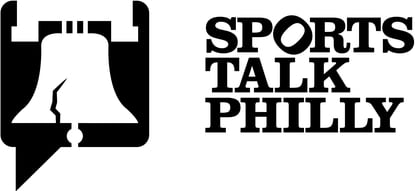The Flyers found themselves in a dire predicament over their past two games, as they were shut out in quick order by San Jose and Ottawa, respectively. They've been shut out thrice in November, and have scored a meager seven goals in their last six games.
Those two games represented a microcosm of what's been plaguing the Flyers all season — a lack of offense. Considering the Flyers feature not just one, but two players who were in the thick of last season's Art Ross Trophy race, one would not expect the offense to be a problem in the slightest entering this season.
But through 20 games this season, the Flyers' offense is at a horrid pace. It's the fewest amount of goals that the team has ever scored in its first 20 games, with the previous low being 39 goals in 1968-69 — a team that featured Don Cherry's younger brother, Dick. (No, I did not make this up).
Per Elias, Flyers' 34 goals through 20 games is a franchise low for that point of a season. Previous low was 39 goals in 20 games in 1968-69
— Adam Kimelman (@NHLAdamK) November 22, 2015
The Flyers' offense has scored just 1.70 goals per game, dead last in the NHL. Only Anaheim (1.76) has fewer than two goals per game as well. Both the Flyers and Ducks are the only teams with fewer than 40 goals scored (37 and 34, respectively), and at the Flyers' rate, they might hit 40 just in time for the All-Star Break.
These two shutouts did come with valiant efforts, as they posted 34 shots on Martin Jones and 38 on Craig Anderson. However, there were not too many quality scoring chances on those shots. While the law of averages would imply that more shots on goal would result in more goals, lighting the lamp has come at a premium for the Orange and Black.
Believe it or not, the Flyers are a middle-of-the-pack club when it comes to shots per game. They have averaged 30.4 shots thus far — tied with St. Louis for 11th in the league — and are one of 13 teams to average over 30 shots per game.
So what can Dave Hakstol do to help the offense?
Much has been made of Hakstol's work in the neutral zone thus far, and to his credit, the Flyers' neutral-zone play has improved by leaps and bounds compared to Craig Berube's system. While neutral-zone play is critical to the outcome of any game, it doesn't always put goals up on the scoreboard — but it does help set up a good offensive-zone attack. Hockey is a three-zone game, and you can't sacrifice good play in one zone for great play in another.
While Hakstol has led a decent offensive-zone attack that will shoot the puck and register respective shot totals for each game, the quality of shots taken has suffered. As cliche as it sounds, the Flyers need improvement in working in the dirty areas around the net and generating those scoring opportunities.
Sure, when you take upwards of 30 shots per game, you're bound to fall into some goals every now and then. But there's no good in taking that many shots without any decent scoring chances to supplement them.
You can shoot the puck all you want, but it doesn't do much good if they are low-percentage shots and the quality of scoring chances is lacking. The Flyers' struggles aren't about how much shots they take, per se, they are more about the quality (or lack thereof) of shots taken.
As the Flyers' season reaches its quarter mark, their historically-bad offense is a troubling red flag. It's no longer considered early in the season, and if this pace keeps up, 2015-16 will be a season even more dismal than expected — even for a season where expectations were tapered to begin with.
Rob Riches is a contributor to Flyerdelphia and Sports Talk Philly. Follow him on Twitter @Riches61

